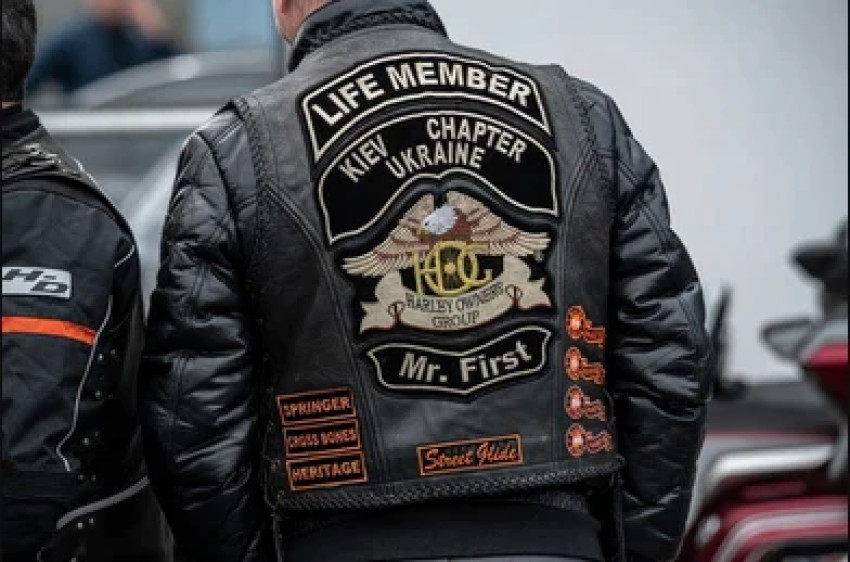
From the iconic "colors" worn by outlaw motorcycle clubs to the intricate emblems of riding groups and associations, these patches hold a storied history that reflects the ethos and values of the biking community. In this exploration, we delve into the origins, symbolism, and cultural impact of motorcycle club patches, tracing their evolution from humble beginnings to enduring symbols of brotherhood and pride.
Chapter 1: Origins and Evolution The tradition of motorcycle club patches can be traced back to the post-World War II era, a time when returning veterans sought camaraderie and adventure on the open road. Inspired by the sense of freedom and rebellion embodied by motorcycle culture, groups of riders began forming clubs as a way to bond over their shared passion for riding. These early clubs often adopted distinctive insignias and colors to distinguish themselves from one another, laying the foundation for the patch culture that would follow.
Chapter 2: The Meaning Behind the Colors For many motorcycle clubs, the "colors" worn on their vests or jackets serve as sacred symbols of identity and allegiance. These colors typically consist of a large back patch, often adorned with the club's name or emblem, accompanied by smaller patches worn on the front or sleeves. The design and placement of these patches are carefully regulated within the club, with each patch carrying specific meanings and responsibilities. The colors represent not only membership in the club but also a commitment to its values, traditions, and brotherhood.
Chapter 3: Brotherhood and Loyalty At the heart of motorcycle club culture is a strong sense of brotherhood and loyalty among members. Motorcycle club patches serve as outward expressions of this bond, signifying a shared commitment to one another and to the club's mission and ideals. Through thick and thin, members stand united under the banner of their club, supporting one another on and off the road. The patch becomes more than just a piece of fabric; it becomes a symbol of trust, respect, and unwavering solidarity.
Chapter 4: The Language of Patches Motorcycle club patches speak a language all their own, conveying a wealth of information to those familiar with biker culture. From the placement and design of patches to the colors and symbols they feature, each element carries significance and meaning. Patches may denote a member's rank or position within the club hierarchy, highlight specific achievements or milestones, or pay homage to fallen comrades. Understanding this language is essential for navigating the complex social dynamics of the biker world.
Chapter 5: Patch Protocol and Etiquette Respect for patch protocol and etiquette is paramount within the motorcycle club community. Patches are not simply fashion statements; they are sacred symbols of brotherhood and belonging. As such, they are treated with the utmost reverence and respect. Non-members are expected to refrain from wearing patches that they have not earned, and unauthorized reproduction or alteration of club colors is considered a serious offense. Adherence to these unwritten rules helps maintain harmony and mutual respect within the biking community.
Chapter 6: The Influence of Pop Culture The mystique and allure of motorcycle club patches have captured the imagination of popular culture, inspiring countless books, films, and television shows. From iconic characters like Marlon Brando's Johnny Strabler in "The Wild One" to the fictional Sons of Anarchy motorcycle club, these portrayals have helped shape public perceptions of biker culture and its symbols. While Hollywood may glamorize the lifestyle, the reality of motorcycle club culture is grounded in principles of brotherhood, honor, and respect.
Chapter 7: Challenges and Controversies Despite their deep-rooted traditions and sense of camaraderie, motorcycle clubs have not been immune to controversy and conflict. Rivalries between clubs, law enforcement scrutiny, and internal power struggles have all posed challenges to the unity and solidarity of the biker community. In recent years, some clubs have faced legal battles and public scrutiny over allegations of criminal activity and violence, further complicating the perception of motorcycle club culture in the public eye.
Conclusion: Motorcycle club patches represent more than just symbols of membership; they are tangible expressions of brotherhood, loyalty, and pride. From their humble beginnings in the post-war era to their enduring presence in contemporary biker culture, these patches serve as powerful reminders of the bonds that unite riders around the world. As the motorcycle community continues to evolve and adapt to changing times, the tradition of patch-wearing remains a timeless symbol of the enduring spirit of camaraderie and adventure that defines the biker lifestyle.



